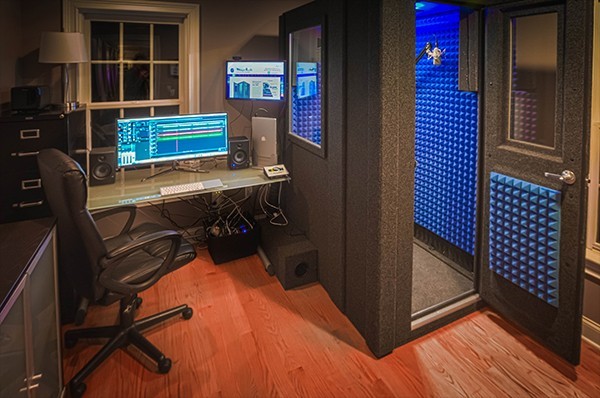
This is the first in a series of articles that will expand on the points found in the article “Equipping Your Home Studio.” Before you buy, build, or alter anything, do some research and then make a plan for your home voice over studio. This series of articles will help you do both.
So, if you’re ready to take the plunge, let’s take a look at the first step towards setting up your own affordable home voice over studio.
Part 1: Selecting your Studio Space
Congratulations. You’ve decided to convert a room or a part of a room into a home studio. You’ve talked to pro audio suppliers about equipment and acoustic materials. And you’ve searched the Web for “home recording studio,” “project studio,” “personal recording studio,” etc., asked other voice over talents about their home studio building experiences, and visited online voiceover groups and forums and ask questions. But it seems the more you talk about it, the more confused you get. This is the ideal time to step back and simplify.
What’s the plan, Stan and Fran?
A voiceover studio can be nothing more than a closet with a mic on a mic stand hooked up to a laptop computer sitting on a table or barstool outside the closet. Or it can be a purpose-built room that’s been soundproofed, acoustically treated, and outfitted with a sophisticated mixing board, outboard processing equipment, high-end speakers, and a professionally built vocal booth in the corner. So, the first decision is how much studio do you need and can afford? Let’s assume your reading this article because you’re looking to build an inexpensive yet functional voiceover studio.
OK. Quiet on the Set
Now, what’s the one thing every studio that contains a microphone needs? Quiet. Long periods of uninterrupted quiet. Is there a space in your home or apartment that can provide that space without installing soundproofing materials? Speaking of soundproofing, regardless of what anyone tells you, the only thing that stops sound from coming in or out of a studio is mass—heavy, dense material. How heavy? How dense? Until recently, major studio installations were soundproofed using sheets of lead sandwiched in between thick sheets of drywall. Nowadays, a heavy vinyl material has replaced sheets of lead in most instances because it’s cheaper and easier to install. Many studios are built as rooms within rooms, which provides even greater isolation for the inner room. So, if anyone tells you their foam or fiberglass product will soundproof your studio, politely thank them and disregard their advice.
So, what if the space you have available isn’t dead quiet and a major soundproofing renovation isn’t an option? Well, you can reduce intruding noise using fiberglass panels, by replacing hollow-core doors with solid wood, and by covering windows and walls with heavy curtains or “sound blankets.” These materials absorb sound, which will reduce it to tolerable levels but not totally eliminate it. There are special caulks you can use to fill cracks and spaces around windows that let sound in. If you really need to reduce noise from outside of, say, a particular wall, you can purchase acoustic foam backed with vinyl soundproofing and attach that to the wall. It’s not inexpensive, though. Other sound intrusion sources in your space that will need attention include forced air heating and cooling ducts, and radiators. Outside your space, be sure to consider adjacent rooms containing plumbing and appliances that make noise.
The Next Step
After you’ve selected the space for your studio and ways to make it as quiet as possible, you’ll need to create a studio layout. Where you place your mic and your speakers and the acoustics of the room will play a big part in how your voiceovers will sound to your clients. That’s up next in part 2 of this series, plus we’ll talk about a simple shortcut to acoustically treating and arranging an entire room: a dedicated professional voice-over booth.
© Peter Drew, 2021
Next article: The Future of Voiceovers
